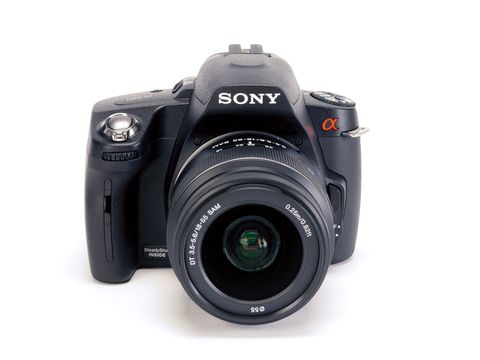TechRadar Verdict
Pros
- +
Versatile
- +
Cheap
Cons
- -
Unrefined
- -
Not very nice to handle
- -
Tough competition
Why you can trust TechRadar
With mirrorless hybrid cameras grabbing all the limelight, the D-SLR market's been a bit quiet of late. Just the right time, then, for Sony to pounce with two new cameras.
The A390 is one of two new models aimed at beginners – the other is the cheaper A290. These cameras share the same 14.2-megapixel CCD sensor, but the A390 reviewed here also includes Sony's Quick AF Live View mode and a tilting LCD display.
Sony's D-SLR range is confusing at the moment, because there are a number of existing models interwoven with these new ones. You can ignore the older A230 and A330, though, and treat the A290 as the new entry-level model, the A390 as the next one up and the A450 as Sony's first 'intermediate' SLR.
But you might also notice a certain similarity in specs between the A390 and the A380 launched over a year ago. The resolution is the same, the Live View system is the same and the tilting LCD screen is the same. So what's actually new?

Well, Sony says it's redesigned the grip for better handling, and reorganised the buttons, but that appears to be it. Nevertheless, the A390 is ostensibly a 'new' camera and with a street price of around £400, it certainly looks good value for money.
Build quality
The old A380's grip had a sharply profiled front edge, which wasn't very comfortable, and this is one of the niggles that's been fixed in the A390. The controls on the top are pretty straightforward.
The Mode dial is over on the far left and on the right of the pentaprism is the Live View/OVF switch. Just to the right of this is the A390's Smart Teleconverter. This offers additional magnification in Live View mode, corresponding to the 1.4x and 2x magnification of optical teleconverters.
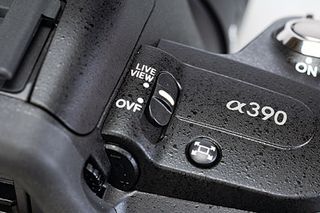
It is, of course, a digital zoom by another name, and while users upgrading from a compact camera might be tempted, D-SLR users are unlikely to be impressed.
But the A390's still an oddly bulbous camera that seems thicker in the body than its rivals, which might be due to the tilting LCD mechanism. There's only a narrow gap between the grip and the lens flange, leaving very little room for your fingertips, while round the back the LCD leaves little room for anything else.
The directional controller's so near the edge of the camera that you can't help putting some pressure on the buttons with your thumb as you hold it, and it's right up against the edge of the LCD, too, so that the 'left' button is actually quite difficult to press.
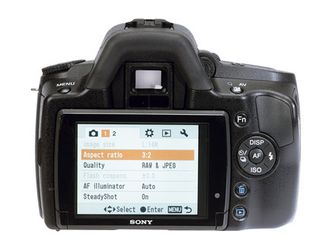
The buttons are clearly labelled, but have a short travel and a slightly soft feel. You press up to change the display mode, right to set the flash mode, down for ISO and left for the drive mode. Other settings can be reached with the Fn (function) button just above.
This displays a screen with icons for adjusting the autofocus mode, AF area, metering pattern, dynamic range optimiser, white balance and Creative Style. You have to click them to get to a screen where you can make the adjustment, and it does seem like a click too many. Couldn't this all have been done with an on-screen menu? Perhaps Sony thinks beginners need big buttons.
The A390 retains the graphical display of earlier models, which uses sliding shutter speed and aperture scales to show how they're related when you make exposure adjustments – it's particularly effective in the Aperture Priority and Shutter Priority modes, where you can trade off one setting against the other.
The A390's plastic body makes it feel entry level and this applies to the 18-55mm kit lens too. Zoom action is light and smooth, but the AF is on the rough side. An eye-start AF system is enabled by default, but it's quite distracting to have it start shunting and whirring the moment you put the camera to your eye.
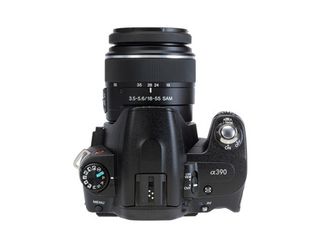
There's more mechanical shunting when you turn the camera on, which may be due to Sony's sensor-shift SteadyShot anti-shake system. Sony's D-SLRs have gone through a couple of generations since they were inherited from Konica Minolta, and it's surprising they haven't come up with something a bit more refined by now.
Controls and Features
The Quick AF Live View mode is perhaps the Sony's most interesting feature. It's not a very elegant solution, but it involves far less mechanical movement and retains the use of the standard AF sensor.
It's well-known that phase-detection AF (the normal SLR method) is faster than contrast detection (sensor-based AF), and other Live View cameras do struggle to focus quickly. You don't get this problem with the Sony, so while its AF system is unrefined in normal (optical) viewing, it trounces the rest in Live View mode.
The disadvantage is that because you're not using the main sensor you don't get a movie mode. Sony might say that's not a problem because that's what the NEX-3 and NEX-5 are for. Besides, most of us buy D-SLRs to take stills rather than movies, so it may not be much of a loss.

Otherwise, the A390's features are pretty run-of-the-mill for an entry-level D-SLR. You get 14 million pixels, but that's only a slight step up from the 12-megapixel sensors in some rival cameras, and not really enough to get excited about on its own. And while the SteadyShot INSIDE anti-shake system seems reasonably effective, you don't get the optical stabilising effect in the viewfinder that lens-based stabilisers provide.
Image quality
The image quality is good, but there's no sign that the A390's 14-megapixel sensor resolves significantly more detail than a 12-megapixel APS-C sensor. At a pixel level, detail is slightly unsharp, and doesn't improve noticeably if you shoot RAW and process images in Sony's own Image Data Converter or Adobe Camera Raw.
Images sharpen up pretty well in software, but there would still be little point in choosing the A390 on the basis of megapixels alone.
The metering system is good, though. Unlike many D-SLRs, the multi-pattern metering system doesn't favour shadows at the expense of highlights. Instead, it achieves a good balance between light and dark, and in high-contrast lighting Sony's D-Range Optimiser successfully brings shadow tones and highlights closer together without producing unrealistic-looking images.
It's a shame you have to estimate the level to apply manually, though, and that there isn't some kind of automatic option. The white balance is good too, though there is a slight shift towards green if you use Adobe Camera Raw to process its RAW files (that's an ACR trait rather than the camera's).
In fact, Sony's own Image Data Converter is a very good alternative to Adobe Camera Raw. It's a bit slower to use, but much more faithful to the camera's own colour rendition and picture styles and has a decent set of image enhancement tools.
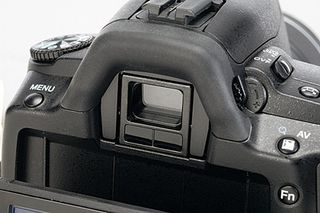
The high-ISO performance of Sony's 14-megapixel NEX-5 was impressive, but that used a CMOS sensor. The A390, which uses a CCD, is alright up to ISO400, but at ISO800 colour noise creeps in, and while ISO1600 is acceptable, ISO3200 is a step too far, with blotchy colour noise, over-processed edges and smoothed-over textures.
Our conclusion
The A390 is a decent enough camera for the money, but its build, finish and general lack of refinement are a constant reminder that it's a budget model. It's so similar to the A380 you wonder why Sony bothered launching a new version.
Sony should be worrying about the latest hybrids, like Panasonic's G-series cameras and the Samsung NX10, which are smaller, lighter, nicer to use and offer full-time Live View (with smooth and responsive AF) and HD movies.
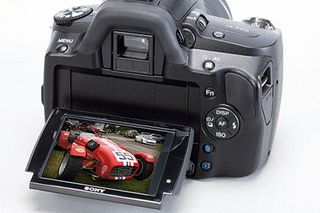
Sony's been making D-SLRs for a while now, and it's surprising it hasn't progressed further. You get the feeling it's devoting attention to marketing existing camera technologies rather than developing new ones.
Follow TechRadar Reviews on Twitter: http://twitter.com/techradarreview
